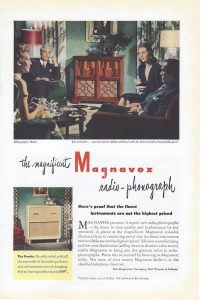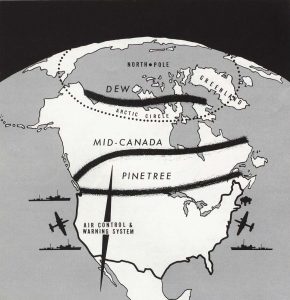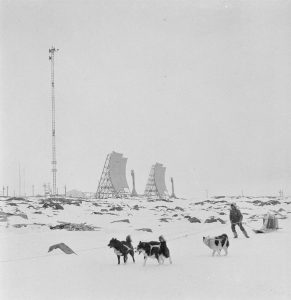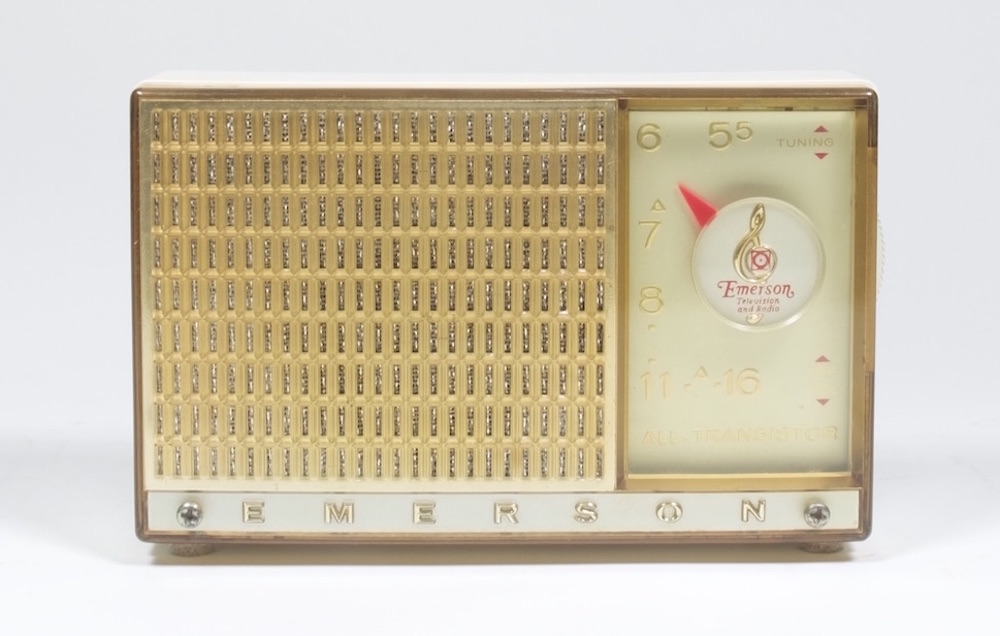Post-War Radio
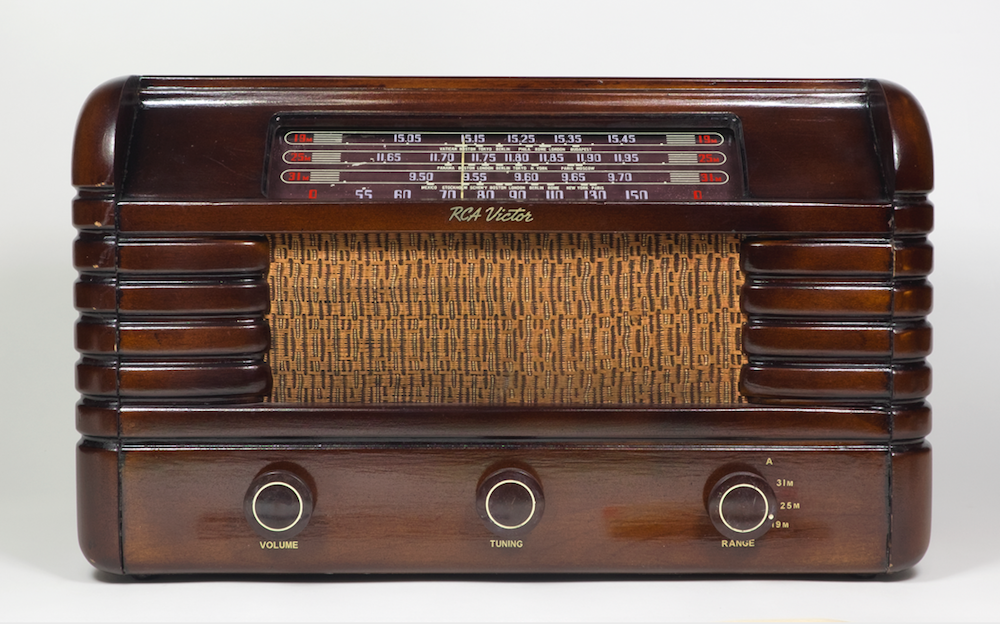
Tube Radio, RCA Victor: Model M-45A (1946), Montreal, Quebecc 23x 40.5x 19.5cm. Musée des ondes Emile Berliner.
After the Second World War, radio became a staple of Canadian life. Industries reverted from making equipment for war back to consumer goods for Canadians at home, including radio receivers. Radio could could be found in more rooms because of mass-manufactured miniature receiving sets. These radios could have brightly coloured plastic or mellow wooden cases. The different exteriors could match schemes of the redecorated apartments and newly built suburban homes that were springing up around urban centres across the country.
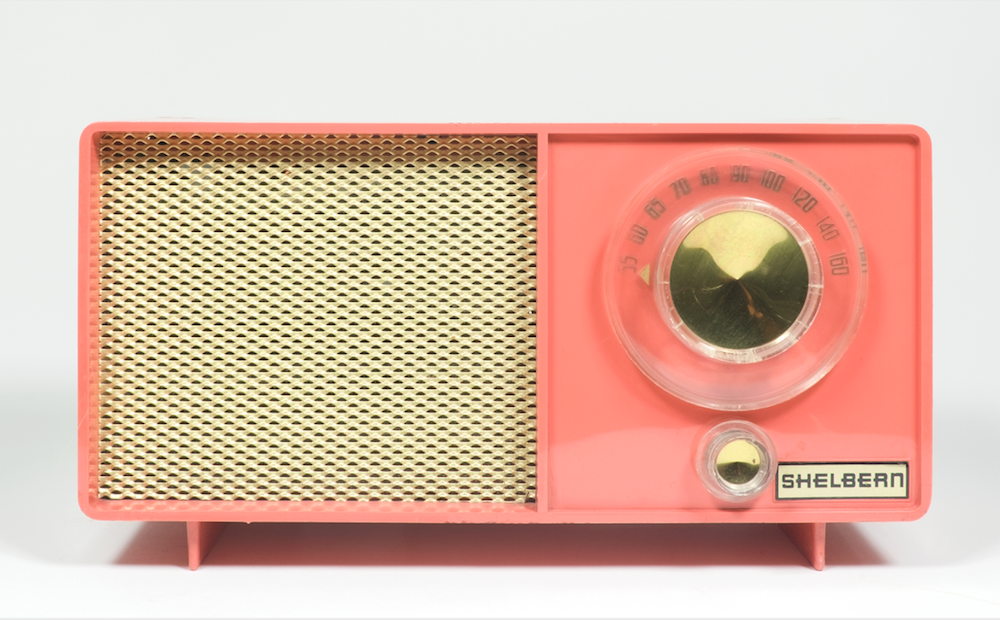
AM Tube Radio, Shelbern: Model 55 (1955), Montréal, Québec, 15 x 28 x 12.5cm. Musée des ondes Emile Berliner.
Radios joined record players as part of the home’s entertainment centre. Often concealed in sleek, modern furniture, the radio broadcast popular variety and musical shows at night. However, with the wider availability of television sets in the mid-1950s, the radio became less of a focal point for family entertainment in living rooms. Instead, baby boomers used radios to listen to rock and roll and other music in their bedrooms or on the go. Another reason for tuning into a live radio program was to keep up with sports news, like hockey.
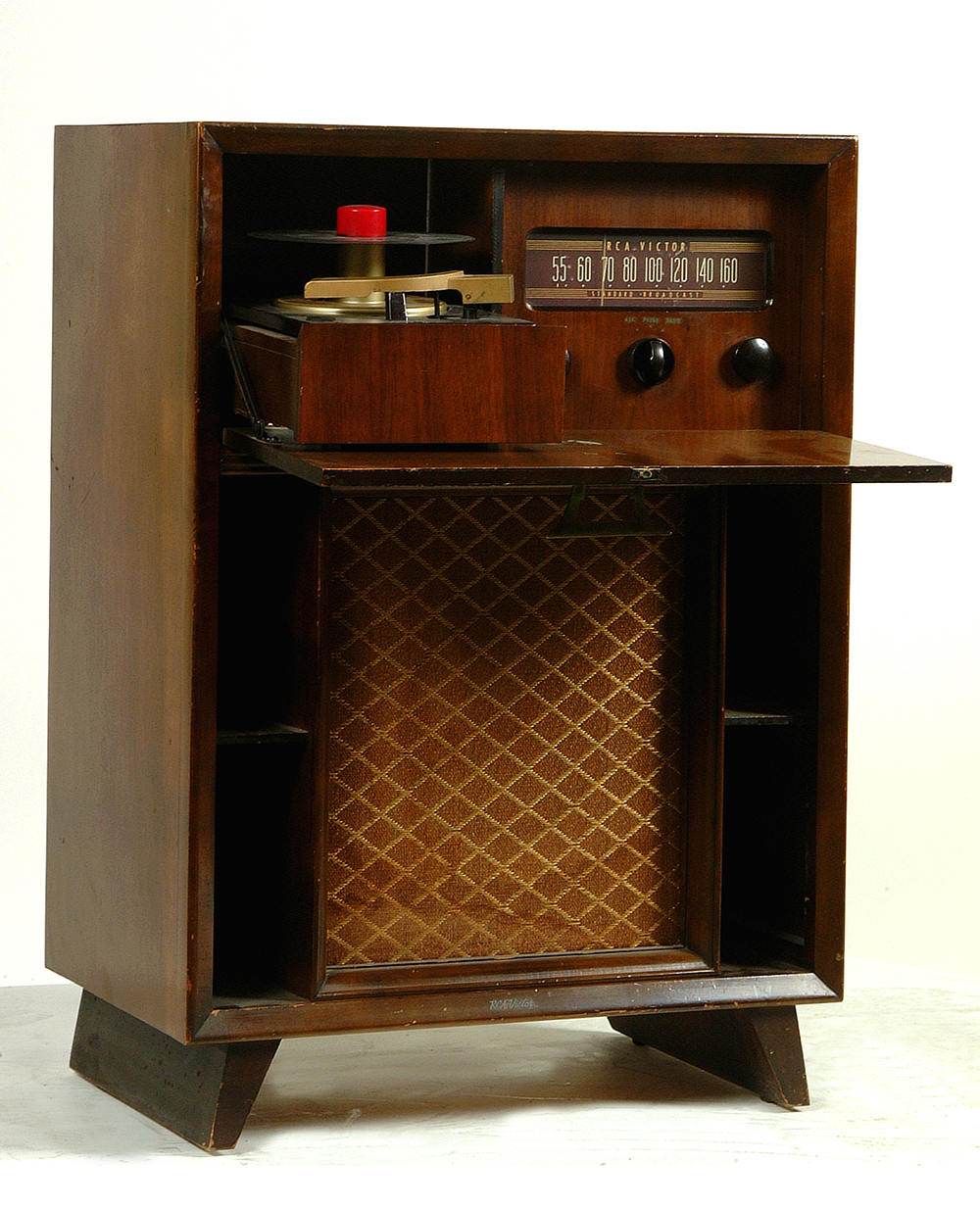
RCA Victor: Model 9W 501 (c.1950), Montreal, Quebec, 78 x 55 x 36cm. Musée des ondes Emile Berliner.
Despite the rise in popularity of television, radio continued to provide Canadians with a sense of civic connection. This was especially the case for emergency preparedness. Canadian Forces worked with the US army to create the Distant Early Warning Line in the Arctic. This line of radar stations was built to warn North Americans of potential nuclear attack from the Soviet Union.
Listeners needed to be able to access important announcements over the radio. Some radio dials even had triangle markings on emergency broadcasts frequencies. Emergency plans included retreating to fallout shelters with battery-powered radio receivers. The largest one was built in Carp, Ontario, to house the Federal Government in the event of an attack. This fallout shelter included a CBC broadcasting studio. In the scenario of nuclear attack, the Government saw radio as an indispensable link between them and the citizens of Canada.


